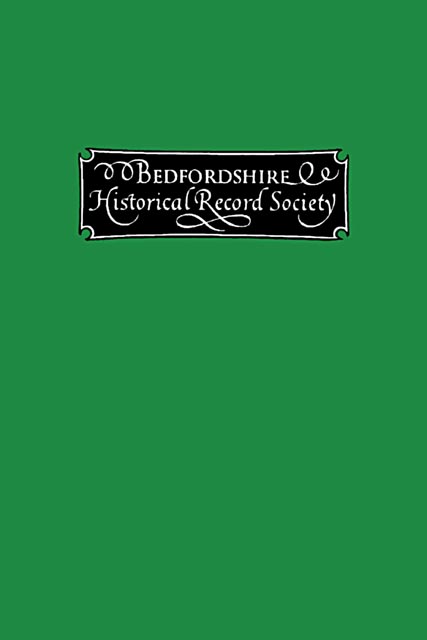The Relief of The Poor at Eaton Socon, 1706-1834
Published online by Cambridge University Press: 14 July 2023
Summary
Introduction. This essay is the first attempt to describe at length the methods of relief of the poor in a Bedfordshire parish over a period of a century or more. Its detailed nature5 has been made possible by the combination of features possessed by Eaton Socon and its parish records, rarely found elsewhere. The village was deliberately chosen on this account, and several points which have since become clear confirm the original opinion that Eaton Socon is a parish singularly fit for investigation. It should however be made clear at the outset that it is not a ‘typical’ parish, from the study of which one might hope to draw general conclusions; these can never be obtained from the poor law records of any individual parish. There can be, in fact, no normal parish: the variety of methods of administration, of the population and area, and of the standard of efficiency of the overseers’ work from year to year, over the whole period from 1597 to 1834, preclude this. What sort of parish therefore can be looked on as most suitable for poor law research? It should be rural in character, yet have a relatively high population; small villages rarely had the means for making pioneer experiments or undertaking big schemes; while their records can seldom be lengthy and detailed. On the other hand, towns (even small market-towns) were affected by conditions which modified the general practices of poor relief, and should be treated specially. The ideal parish should have a comparatively complete series of overseers’ accounts; they should begin at a fairly early date, be compiled with some degree of detail, and exist in a sound state of preservation. The accounts should be supplemented by cognate records, such as apprenticeship indentures. Moderate as these stipulations may seem, their fulfilment is found to be exceptional. Only one Bedfordshire village (Pavenham) can boast of a continuous series of overseers’ accounts (1703-1834). Fourteen parishes possess overseers’ records commencing before 1700, but in no case can show an unbroken set to 1834, most having long breaches. How does Eaton Socon stand the test? It was the most populous village in the County in 1801, having 1,625 persons; and ranking fifth, after the towns of Bedford, Luton, Leighton Buzzard and Biggleswade, but in front of several smaller market-towns.
- Type
- Chapter
- Information
- Publisher: Boydell & BrewerFirst published in: 2023

